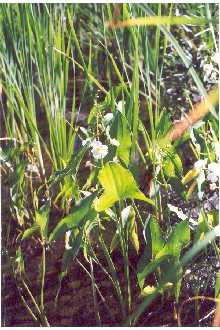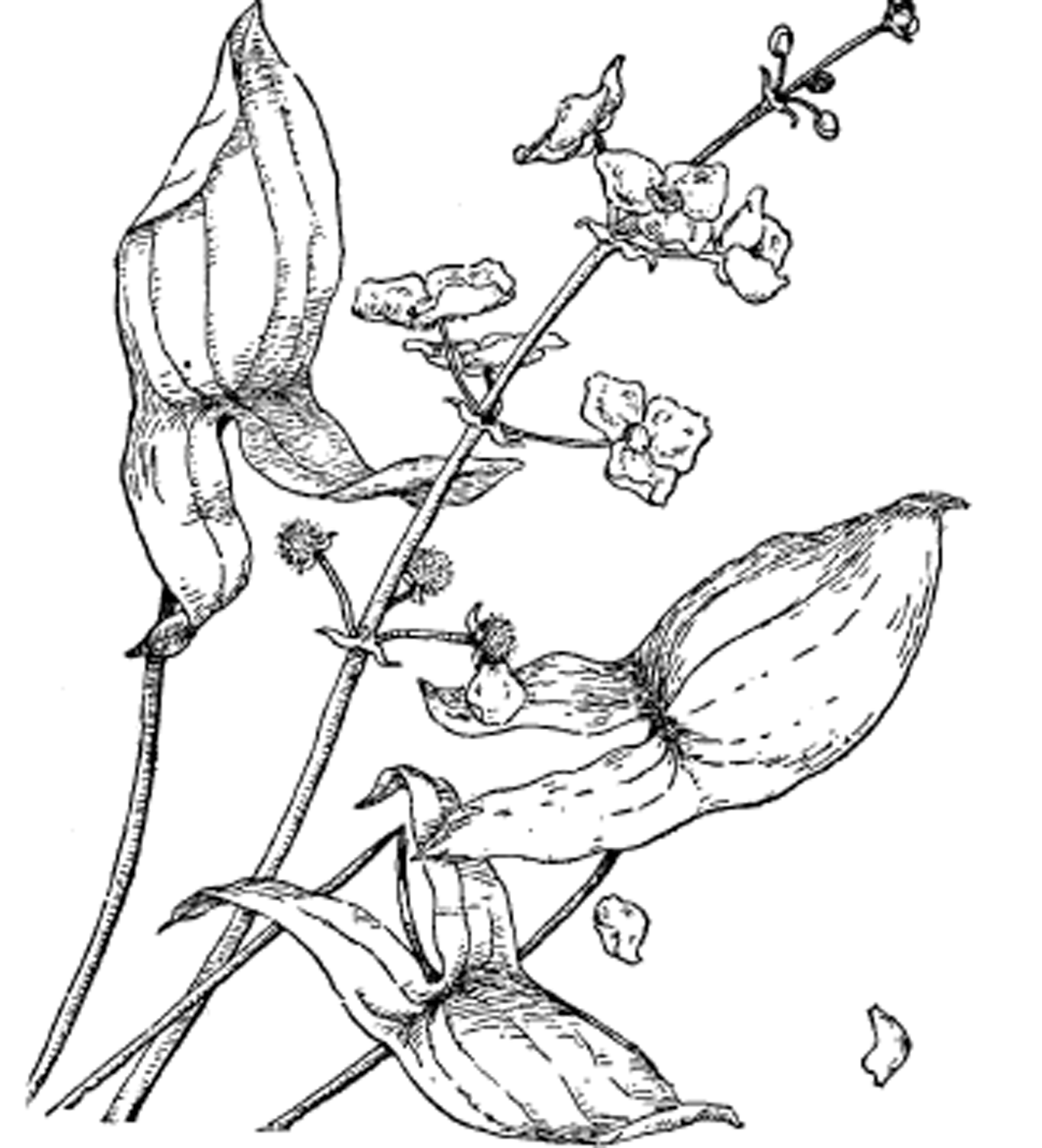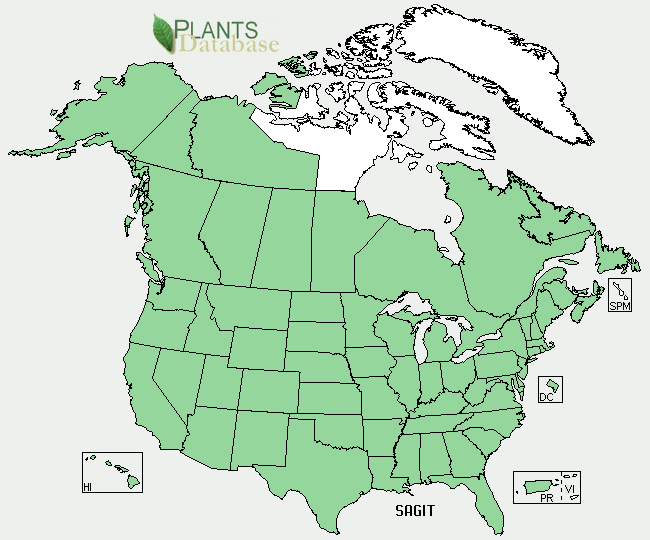Arrowhead
(Sagittaria L.)

Jennifer Anderson @ USDA-NRCS PLANTS Database

Taken from: Wild Plants Of The United States And Canada By Charles Frances Saunders 1920
Arrowhead (Sagittariavariabilis Eng.), (Duck Potatoe):
So called from the shape of its leaves. An aquatic plant with arrow-shaped leaves and potato like tubers in the mud. It is found in swamps, ditches, ponds and shallow waters very generally throughout North America from the Atlantic to the Pacific and from Canada to Mexico, flowering in summer with 3-petaled white blossoms arranged in verticels of three. Seeds ripen from August to September. Tubers are egg shaped ranging from 1 to 2 inches in length developing at the ends of slender roots.
Food :
All Indians, whether of the Atlantic Slope, the Middle West or the Pacific Coast, have set great store by the plant because of its starchy, white tubers, somewhat resembling small potatoes, developed in autumn at the ends of the rootstocks. Lewis and Clark, in their narrative, “The bulb is a great article of food and almost the staple of commerce on the Columbia. . . . It is collected by the women, who employ for the purpose canoes . . . sufficient to contain a single person and several bushels of roots, yet so very light a woman can carry them with ease. She takes one of these canoes into a pond where the water is as high as the breast, and by means of her toes separates from the root the bulb which on being freed from the mud rises immediately to the surface of the water and is thrown into the canoe. The best times for collecting tubers is in fall or early spring. Remove the tuber growing at the end of each rhizome. Scrub the tubers clean and them boil them in salted water for 15 minutes. ”
Tubers can be baked in fire embers, boiled or roasted in ashes. Roasted or boiled, the tubers become soft, palatable and digestible, and to travelers in the wild make a fairly good substitute for bread.
Only the roots (tubers) are eaten. They are very bitter when eaten raw but become quite tasty when cooked either roasted or boiled. The flesh is cream colored and have a mild nutty flavor somewhat like a sweet potato.
To preserve for winter Native Americans would slice the boiled roots into thin slices, string them on cordage to dry. They should be hung in a sheltered open air area for later use.
• Can be eaten raw but most find it too bitter eaten this way.
• Boil and eat as a potato, mashed or whole.
• Added to stews or soups as you would a potato.
• Roasted and eaten as a potato.
• Fried and eaten as a potato.
• Rootstock dried and ground into flour.
• Candied with maple syrup or honey.
Medical:
A number of tribes are known to have used the arrowhead plant for medicinal purposes.
• The Navajo used the arrowhead plant to treat headaches.
• The Ojibwa used a tea made from the dried tubers for indigestion.
• The Algonquin of Quebec used the root to treat tuberculosis.
• The Cherokee used an infusion of leaves to bathe feverish babies, with one sip given orally. The Iroquois used it for rheumatism, a dermatological aid, and a laxative.
• A Poultice made from the roots used in the treatment wounds.
Distribution




